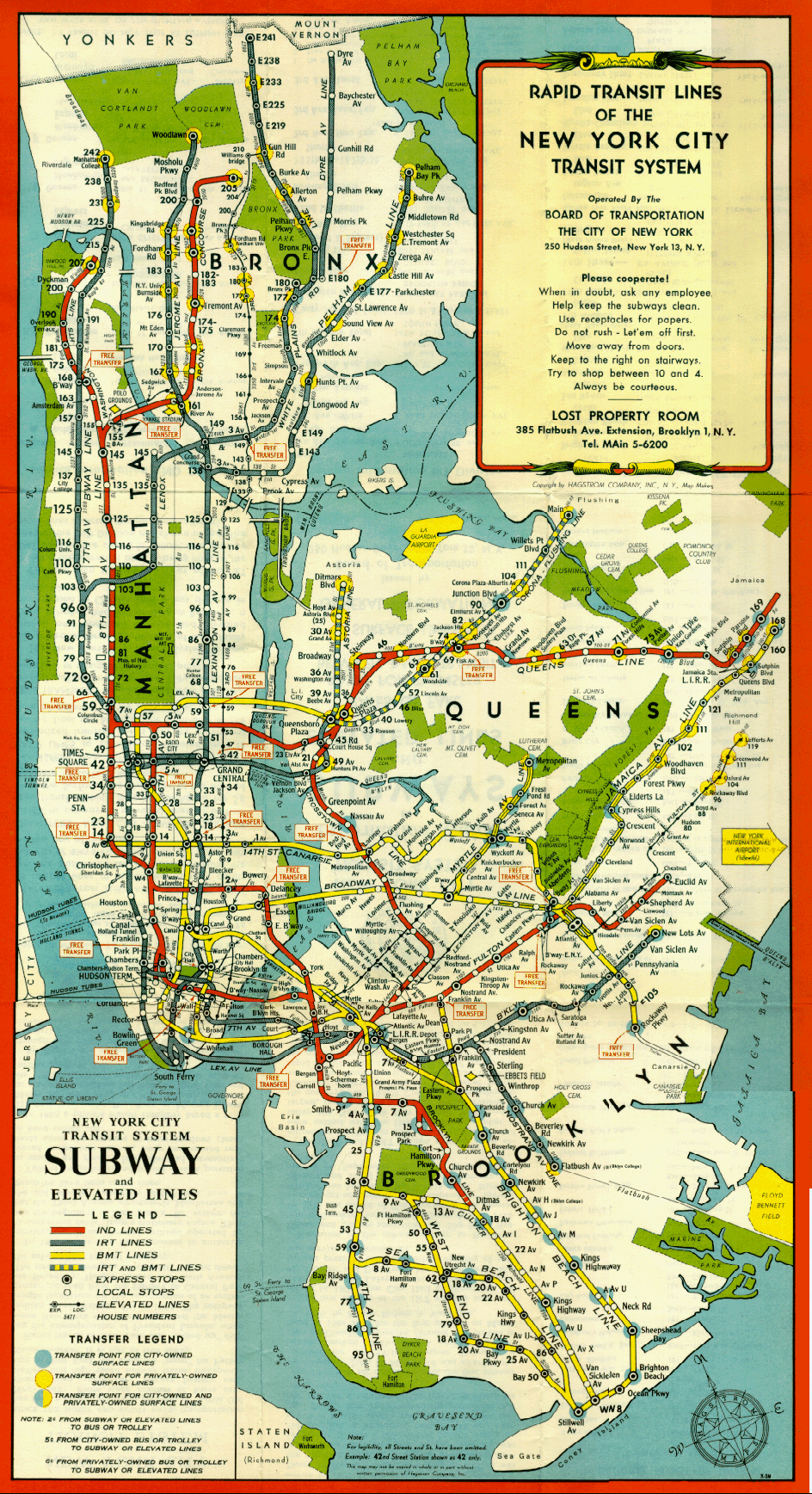Carl Cervone
Applying The Harper’s Index to The NYC Subway
June 5, 2016
Ridership is up, service quality is down. The MTA, which runs the NYC subway system, is quick to offer statistics on the former, but takes a more taciturn style when asked to provide transparency on the latter. While every regular commuter has anecdotes about egregious delays and dangerously overcrowded platforms, few know the hard facts about the degree to which reliability has deteriorated and what’s being done about it.
To see if there’s a light at the end of the tunnel, I combed through the MTA’s recent audit reports, performance reviews, and capital plan. It would be reassuring if, in these reports, the MTA were tracking and reporting the incidence of key issues and providing details on the changes it’s making to alleviate problems. Unfortunately, there doesn’t seem to be much analysis or introspection going on. Here’s my take on the numbers I saw:
MTA’s on-time performance target for 2013 and 2014: 91.9
Margin of error, in minutes, for an NYC subway to arrive at its terminus and still be considered “on-time”: 5.0
MTA’s actual on-time performance result for weekdays in 2013: 80.5
… result for 2014: 74.0
Year that the MTA stopped reporting “on-time performance” and switched to a new metric called “wait assessment”: 2015
Maximum scheduled interval (“wait”) in minutes between two trains during peak hours: 10
Percent margin of error on top of the scheduled interval that the MTA still considers a normal “wait”: 25
Maximum percent of hours in a normal week that MTA is tracking “wait assessment”: 57
MTA’s “wait assessment” target for 2015: 80.7
MTA’s actual “wait assessment” statistic through June 2015, reported in early 2016: 78.4
Average “wait assessment” for NYC’s three shuttles, which were also the three best performing lines in the system: 92.2
Total number of stations served by the three shuttles: 11
Average “wait assessment” for NYC’s three worst performing lines (the 5, A, and F trains): 70.1
Total number of stations served by the three worst performing lines: 156
Ratio of stations served by the three worst performing lines relative to the three best performing lines: 14 to 1
Weighting of the three worst performing lines relative to the three shuttles in the MTA’s “wait assessment” statistic: 1 to 1
Total number of NYC subway passengers in the year 1947: 2,051,000,000
… in the year 2014: 1,758,000,000
Total number of new stations built between 1948 and 2014: 10
Total number of passengers on the London Underground in the year 2014: 1,305,000,000
Number of metrics tracked in the London Underground’s “Service Performance Summary”: 24
Percentage of London Underground’s scheduled kilometers operated in 2014: 98.0
Percentage of London Underground’s timetabled kilometers operated in 2014: 95.1
Average minutes of “excess journey time” per trip reduced across London Underground since 2010: 1.89
Most recent “customer satisfaction” score for London Underground (out of 100): 85
Number of NYC subway lines that don’t offer countdown clocks or provide real-time arrival estimations: 15
Number of subway lines that use Automatic Train Supervision (ATS) to track train locations and provide real-time arrival estimations: 7
Cost to complete ATS installation: $228,000,000
Number of years required to complete ATS installation: 11
Cost for NASA to launch a space shuttle: $450,000,000
Minimum number of years required to build a space shuttle: 4
Maximum number of trains (rolling stock) on the seven lines using ATS: 458
Implied cost of ATS per train: $497, 817
Quoted hardware cost for three wireless GPS tracking units commonly used for managing truck fleets in real-time: $717.00
Capital MTA requested from 2015–2019 to complete roll-out of intercom Help Points in all subway stations: $156,000,000
Maximum number of stations remaining (out of 469 total) that will receive Help Points between 2015–2019: 269
Implied cost of new Help Point per station: $579,926
Retail price of Siri-equipped iPad Air: $599
Number of iPads that $156,000,000 could buy: 260,434
Current number of high school students in all five boroughs of NYC: 230,669
